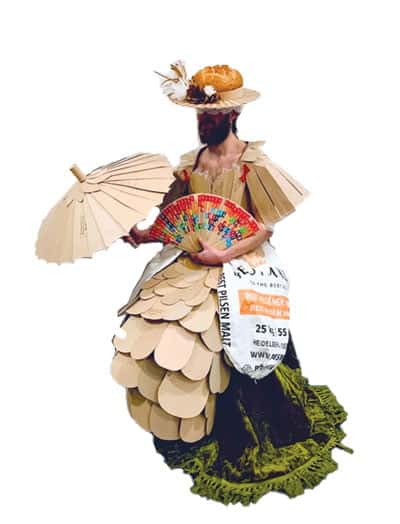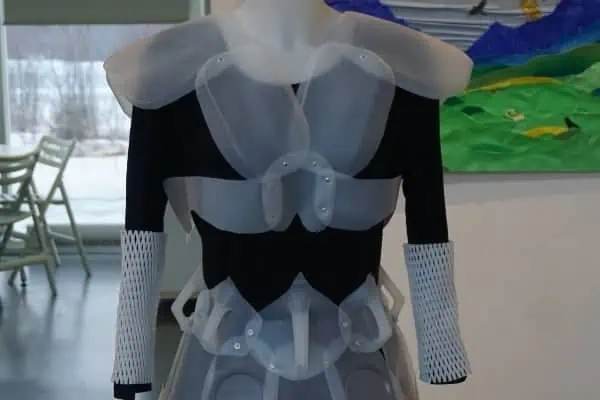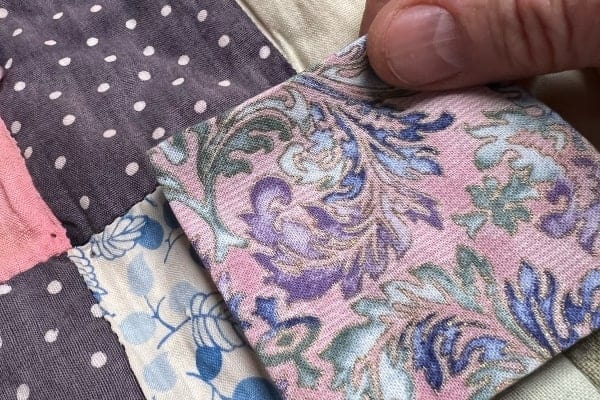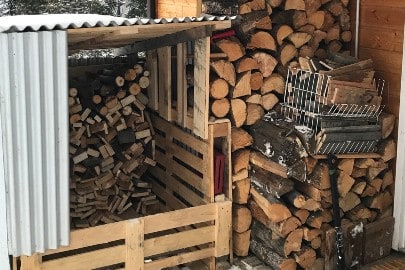Progressive designs, by Scott Dudiak
Scott Dudiak is the program coordinator for Zero Waste Yukon

Milan, Paris, New York … Whitehorse?
That’s right, for another year the Rendezvous Fashion show exhibited the creative garment designs of Yukoners. Channelling their inner Alexander McQueen, this year all designs were made from used, repurposed, or waste materials. Rather than cashmere or silk, these designs used items destined for the bin such as plastic bags, house wrap, cardboard boxes, chip bags, magazines and tetra packs. The five entries were highly diverse, including a traditional can-can dress, a couture-inspired butterfly, a Victorian gown, a glimmering tuxedo and a modern cocktail dress.
There were four awards, including Judges’ Choice, Audience Choice, Stylist Choice and Most on Theme. The winning design was “Sourdough Kate” who made a Victorian-inspired gown from file folders, a malt sack, bubble wrap and a sourdough bread hat to top it all off. The Upcycle Fashion Show highlighted emerging fashion industry concerns such as pollution and waste. The average Canadian throws out 81 pounds of textiles each year and approximately 12 million tons of textile waste ended up in landfills in North America.
Why should we care? Simply put, clothing manufacturing is one of the most destructive industries. Not only are textiles a source of significant waste, their creation is polluting with associated environmental damages from fiber production, dyeing, manufacturing emissions, microfiber contamination of water, and limited options for disposal. Textiles consume roughly 93 billion cubic metres of water annually, contributing to water scarcity in cotton-dependent communities. Furthermore, the textile industry is frequently criticised for its negative social impacts where many workers face dangerous working environments, hazardous substances, long hours and very low pay.
Although 13 per cent of textiles are recycled, most of that is downcycled into insulation or pulp materials. In fact, less than 1 per cent of textiles placed in recycling bins are converted into new clothing, representing a $100-billion loss of material value each year and filling landfills around the world with avaluable materials mistakenly considered garbage. This is a grim statistic given that the clothing industry is growing rapidly with few signs of textile regulations or investment in the tools needed for greater recycling.
The good news is, as an individual, there is a lot you can do to reduce the impact of your clothing. Starting with buying less and evaluating what you will actually wear and what will last. The next is to reduce how frequently you wash your clothes, this has been shown to increase the lifespan of clothes and also reduces the number of plastic microfibers going out the drain. When clothes are inevitably damaged, they can be repaired, either by picking up a needle or taking it to one of many clothing repair businesses in the territory. When you are ready to part with a garment, take it to a clothing swap, sell it online, or donate it to local charities, or thrift stores. The final option is to recycle your clothing at Raven Recycling in Whitehorse, which accepts clothing for recycling free of charge. Half of the proceeds from the sale of fabric is donated to the Whitehorse Firefighters Charitable Society.
Ultimately, solving the textile crisis will take government regulation, industry action, and changing our relationship to clothes. By taking individual action, supporting companies making meaningful steps towards sustainability, and voting for candidates who are willing to take action, we can do our part to reduce the impact of textiles around the world.





4.5